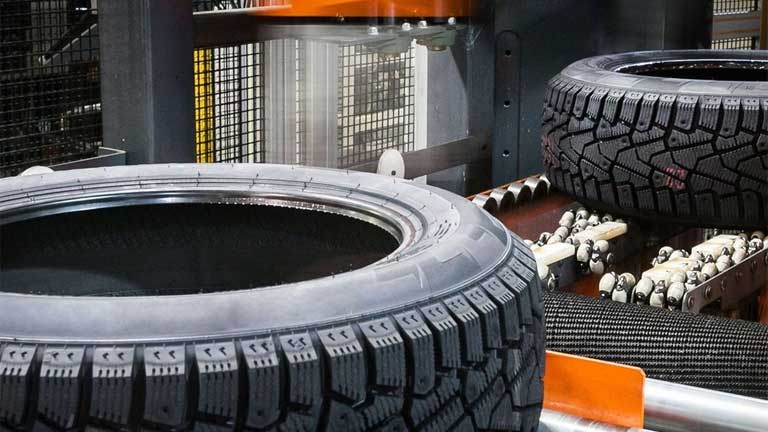
Tires are made from durable, flexible rubber attached to the wheel rim to provide a gripping surface for traction and act as a cushion for the wheels of a moving vehicle. As a rule, tires are made of flexible and durable rubber attached to the wheel rim. Before the development of rubber, early tires were simply metal strips worn over wooden wheels to prevent wear. For the next fifty years, car tires consisted of an inner chamber that contained compressed air and an outer layer that protected the inner chamber and provided traction.
History of Rubber in Tires
Until 1931, the tire industry relied on natural rubber to make rubber car tires. The solid rubber tire was developed shortly after the discovery of vulcanization in 1839, combining rubber, sulfur, and heat to create a flexible elastic substance that retained its shape in hot or cold climates.
These were solid or cushioned tires in which the rubber itself carried the load, absorbing impact and resisting cuts and abrasion. The Carl Benz tire included a metal rim covered with rubber and inflated with air. The invention of this tire was aided by the vulcanization process, which made it possible to produce a rubber with sufficient strength to withstand its use on the road.
The materials of modern tires are synthetic rubber, natural rubber, fabric and thread, carbon black and other chemical compounds. The main ingredients used in producing tires are natural and synthetic rubber.
Making Rubber Tires
The raw rubber used in tire manufacturing is made by mixing liquid latex with acids, which causes the rubber to harden. The rubber is stripped of excess water and formed into sheets that are dried and pressed into bales for shipment to tire factories worldwide. Layers of extruded rubber are glued to the sidewalls and tread; then, the tire is placed in a mold to harden.
Finally, the layers of extruded rubber for the sidewalls and tread are glued into place, and the assembled tire, called a green tire, is removed from the tire changer. The final step includes curing the tires to cure the rubber and installing details such as tire brand and size information. This process vulcanizes the tire, making the rubber harder.
Each tire is carefully inspected for defects such as bubbles or tears in the tread rubber, sidewall and inner part of the tire. Unlike the tire curing process, solid tires are wrapped in thin layers of rubber on a metal holder and forced through a hydraulic system.
Functionality of Rubber Tires
Most tires, such as those for cars and bicycles, are pneumatically inflated designs that provide a flexible cushion to absorb shock when the tire rolls over uneven surfaces. The physical components of the rubber allow it to remain stiff under the tire’s pressure but curl laterally and vertically to accommodate the curves of the road and shear weight as the car moves, turns, accelerates and stops. The rubber can be made with a smooth or traction tread but is more suitable for flat surfaces.
A modern passenger car tire may use up to twenty different types of rubber in different parts of the tire. The chemical composition of each batch depends on the part of the tire: some rubber compounds are used for the body, others for the beads, and still others for the tread. This blend ends up being about 20% natural rubber and 25% synthetic rubber, while the rest of the tire is made up of metals and other materials. Today, tires are made up of approximately 19% natural rubber and 24% synthetic rubber, a plastic polymer.
Regardless of the special components used, all tires in the automotive industry are made from rubber. Many industrial and commercial tires are non-pneumatic and are molded from hard rubber and plastic blends. Rubber (inflatable) tires, installed on millions of vehicles worldwide, are the result of the work of many inventors who have been working for several decades.
When mixed with rubber and then heated, certain chemicals impart specific tire properties, such as high friction (but low mileage) for racing tires or high mileage (but low friction) for car tires. The physical and chemical properties of these rubber polymers determine the performance of each tire component and the overall performance of the tire (rolling resistance, abrasion resistance and grip).
To produce raw rubber for tire manufacturing, liquid latex is mixed with acid to harden the rubber. Natural rubber is the main raw material used in tire production, but synthetic rubber is also used. The composites are then used to make other tire components, such as sidewalls and treads.
These tires are mainly used in North America, while industrial elastic tires are more commonly used in other regions. You might notice this when you’re undergoing tire change services.




